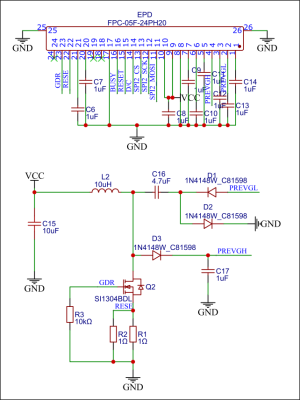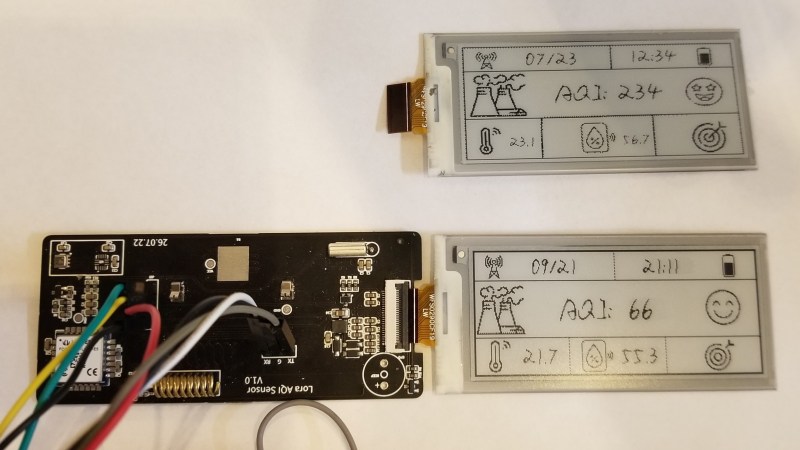
[Aduecho] had seen those cheap eBay deals of e-paper-based pricing tags, and was wondering if they could be hacked to perform some other tasks. After splitting the case open, the controller chip was discovered to be a SEM9110, with some NFC hardware support but little else. [aduecho] was hoping to build some IoT-connected air quality indicator (AQI) units but the lack of a datasheet for SEM9110 plus no sensors in place meant the only real course of action was to junk the PCB and just keep the E-paper display and the batteries. These units appeared to be ‘new old’ stock, so there was a good chance that both would be fresh and ripe for picking.
The PCB [aduecho] came up with is mechanically the same as the original unit, but now sports a Seeed studio Wio-E5 LoRa module, which uses the STM32WLE5 from ST for the heavy lifting. This has what looks like a Semtech SX126x integrated on-die (we can’t think of a sane way an actual SX126x die could be flip-chip mounted, but you never know). Using this module is a snap, needing only very minimal antenna-matching components and a spot of decoupling to function. On the sensing side of things, a Bosch BME680 gas sensor handling the AQI measurements, and a Bosch BMI270 6-axis IMU, provides a gyro and accelerometer, for all those planned user interaction features. As can be seen from the schematic, interfacing the EPD is pretty straightforward, just a handful of parts are needed to generate the necessary bipolar gate voltages via a simple SMPS circuit. The display controller handles it all internally, programmed via an SPI interface.
One area we’re quite fond of in this project are the neat hand-drawn icons, and variable width font, giving the display a kind of note-like quality when drawn on the low-ish contrast e-paper display.
Air quality measurement projects grace these pages from time to time, like this hacked Ikea Vindriktning, and this very similar Wio-E5-based project we covered last month.

















Putting two dice in a package without a substrate is pretty common. The ESP8285 and ESP32-PICO-D4 each have a SPI flash die glued on top of the ESP SoC, and since the flash is physically smaller than the SoC there is plenty of access to run bond wires from the QFN leadframe to either or both parts. SiLabs also does this with the EFR32 series, putting one of their non-RF Gecko SoCs and their Si4463 radio in the same QFN.
Then there are multi-die NAND flash and DRAM which in the past has used staggered dice to cram many memory devices in the same package. Here’s an example of 24 flash chips in one package: https://www.koreatimes.co.kr/www/news/biz/2007/09/123_9628.html . This isn’t common anymore, giving way to Thru-Silicon Vias (TSV) which add vias for the memory bus and power allowing dice to be stacked without bond wires or staggering.
Isn’t it just a mini PCB with castellated pads and standard components and a metal can over the top for emi shielding? I don’t see what the confusion is here.
For flashing the SEM9110 see https://github.com/atc1441/ZBS_Flasher
Hix
If you still have the boards are interested, looks like there has been a great reverse engineering effort for the SEM9110 here: http://dmitry.gr/?r=05.Projects&proj=30.%20Reverse%20Engineering%20an%20Unknown%20Microcontroller
I feel like every few months I see posts about these cheap e-ink tags, but when I take a look through eBay I can never find the things.
I just took a quick look, it seems the best search term to use is “electronic shelf label”.